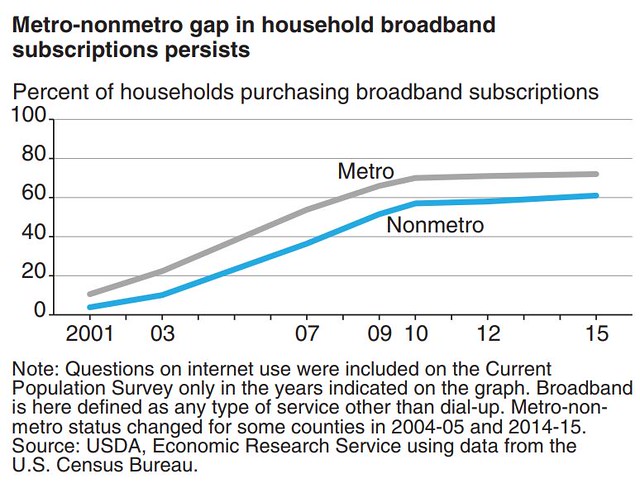
The mission of USDA’s Economic Research Service (ERS) is to anticipate trends and emerging issues in agriculture, food and rural America and produces objective economic research to inform and enhance public and private decision making. Among its research activities, ERS is conducting research on the impacts of and returns to infrastructure in rural areas, and is cosponsoring a workshop with the Farm Foundation on these issues.
As America’s infrastructure ages, policymakers are being faced with choices about how to best invest in improvements in rural communities throughout the U.S. Currently, little information is available in economic literature on the costs and benefits of infrastructure investments in rural America. Through this collaboration with the Farm Foundation, ERS is poised to support research on rural America infrastructure investment that will help fill this gap.
On April 10 and 11, ERS and The Farm Foundation will host a workshop, “The Economic Returns to Rural Infrastructure Investment” where participants will examine, through a series of seven commissioned papers, the return on investment (ROI) from infrastructure improvements, identify gaps in the knowledge base, and assess how this information can be used in future investment decision making by public and private sector leaders. Topics for the papers include the role of government and private investments and partnerships, evaluating issues for federal and state governments, the ROI on rural broadband and other infrastructure investments, and benefit-cost analysis.
ERS regularly produces information that helps the public understand the economic characteristics of rural American communities, including their current infrastructure. Every year, ERS produces Rural America at a Glance, which highlights recent social and economic conditions in rural communities, focusing on county-level trends in population, employment, income, and poverty.
The most recent edition of Rural America at a Glance highlighted statistics about a key area of rural infrastructure, broadband access and use. Household broadband internet use in rural areas increased from 2 to 61 percent between 2001 and 2015, with most of the growth occurring before 2010. The urban-rural gap in broadband use has decreased slightly since 2007, but its persistence reflects fewer broadband options in rural areas despite significant investments. Also contributing to the continued rural-urban divide are the older average age of the rural population, as well as higher poverty rates and lower education levels in rural areas, all factors associated with diminished broadband use.
ERS has a long history of being responsive to emerging issues affecting rural America. By partnering with the Farm Foundation, this workshop will be a catalyst for producing policy-relevant research in an area of growing need.
The workshop is free and open to the public, and you can register via the Farm Foundation website.
